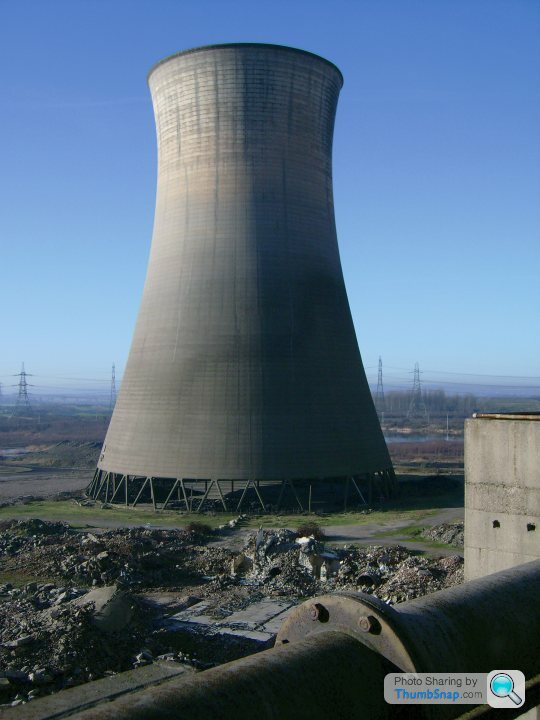Can science and scientific instruments be artistic?
Discussion
I think so. I work in IT and sometimes I find code or designs that are an absolutely elegant solutions to a problem. I do these can also be works of art in their own right. Wired has some highly aesthetic photos of scientific instruments.
https://www.wired.co.uk/gallery/global-physics-pho...
How far would you agree?
4x4Tyke said:
I think so. I work in IT and sometimes I find code or designs that are an absolutely elegant solutions to a problem. I do these can also be works of art in their own right. Wired has some highly aesthetic photos of scientific instruments.
https://www.wired.co.uk/gallery/global-physics-pho...
How far would you agree?
Certainly better than that stupid bed that was at the Tate...https://www.wired.co.uk/gallery/global-physics-pho...
How far would you agree?
Absolutely: things that are right, especially things refined wholly to a single purpose by experiment and / or calculation have an aesthetic that succeeds because it's essentially a by-product, an expression of clear purpose - the logic is intrinsic and while there may be other solutions, this Works.
Something I read many years ago by one of my favourite authors (Primo Levi) for me encapsulates this over time, wonderfully: 'True beauty, that in which every epoch recognises itself, is found in standing stones, the blade of axe, the hull of a boat, the wing of a plane.'
Something I read many years ago by one of my favourite authors (Primo Levi) for me encapsulates this over time, wonderfully: 'True beauty, that in which every epoch recognises itself, is found in standing stones, the blade of axe, the hull of a boat, the wing of a plane.'
Edited by Huff on Monday 1st October 19:46
I'm not sure anyone who has seen Concorde flying would question whether science (and presumably by extension engineering, which is mostly what we see in those images) can be artistic. Maths, science, engineering and art are all human constructs, and very closely linked. Quite often, what we might call aesthetically pleasing has a deeper basis in our mental abstract models of the way the universe works.
Given the winning photo is in Yorkshire, I shouldn't disagree with the selection, but I'm not sure the winning photo relies much on any particular aspect of science or instrumentation. I would have gone for something like the Battersea Power Station control rooms:

Given the winning photo is in Yorkshire, I shouldn't disagree with the selection, but I'm not sure the winning photo relies much on any particular aspect of science or instrumentation. I would have gone for something like the Battersea Power Station control rooms:

Teylers museum in Haarlem (Netherlands) has a fantastic collection of vintage scientific instruments. I suspect their modern equivalents would often be boring looking things made of plastic, rather than beautifully machined brass and carved wood
https://www.teylersmuseum.nl/en/collection/instrum...
https://www.teylersmuseum.nl/en/collection/instrum...
Art is in the eye of the beholder...
A couple of my favourite books are 'Unweaving the Rainbow' by Dawkins, and 'For the love of Physics' by Prof Walter Lewin. The beauty in the world and science and all is clear to see if one looks at things as being more than what is right in front of your eyes.
If that's not artistic, I don't know what is.
A couple of my favourite books are 'Unweaving the Rainbow' by Dawkins, and 'For the love of Physics' by Prof Walter Lewin. The beauty in the world and science and all is clear to see if one looks at things as being more than what is right in front of your eyes.
If that's not artistic, I don't know what is.
The old design adage "Function before Form" is extremely important. The stuff I work on the design & manufacture of is purely functional but sometimes it comes out elegant.
What I always find fascinating is the approach to industrial/scientific design at the end of the 19th century/first half of the 20th century, Some of the designs created then, from microscopes to streamlined steam locos, are truly inspiring.
I suppose it comes down to whether the task that needs to be performed allows the designers the latitude to make things "arty" or whether the best solution to a problem is itself elegant/artful. Some of the 3d printed structures we have experimented with are very graceful and organic, the structure only having to follow the exact load paths.
What I always find fascinating is the approach to industrial/scientific design at the end of the 19th century/first half of the 20th century, Some of the designs created then, from microscopes to streamlined steam locos, are truly inspiring.
I suppose it comes down to whether the task that needs to be performed allows the designers the latitude to make things "arty" or whether the best solution to a problem is itself elegant/artful. Some of the 3d printed structures we have experimented with are very graceful and organic, the structure only having to follow the exact load paths.
Gassing Station | Science! | Top of Page | What's New | My Stuff




